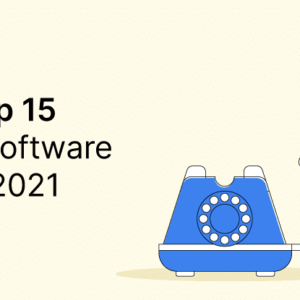
Computer Assisted Telephone Interviewing Software (CATI)
CATI: Guide to Computer-Assisted Telephone Interviewing Software The Voxco Guide to CATI Surveys Dive into our guide to know more and conduct seamless CATI surveys

Find the best survey software for you!
(Along with a checklist to compare platforms)
Take a peek at our powerful survey features to design surveys that scale discoveries.
Explore Voxco
Need to map Voxco’s features & offerings? We can help!
Find the best customer experience platform
Uncover customer pain points, analyze feedback and run successful CX programs with the best CX platform for your team.

We’ve been avid users of the Voxco platform now for over 20 years. It gives us the flexibility to routinely enhance our survey toolkit and provides our clients with a more robust dataset and story to tell their clients.
Steve Male
VP Innovation & Strategic Partnerships, The Logit Group
Explore Regional Offices

Find the best survey software for you!
(Along with a checklist to compare platforms)
Take a peek at our powerful survey features to design surveys that scale discoveries.
Explore Voxco
Need to map Voxco’s features & offerings? We can help!
Find the best customer experience platform
Uncover customer pain points, analyze feedback and run successful CX programs with the best CX platform for your team.

We’ve been avid users of the Voxco platform now for over 20 years. It gives us the flexibility to routinely enhance our survey toolkit and provides our clients with a more robust dataset and story to tell their clients.
Steve Male
VP Innovation & Strategic Partnerships, The Logit Group
Explore Regional Offices

Find the best survey software for you!
(Along with a checklist to compare platforms)
Take a peek at our powerful survey features to design surveys that scale discoveries.
Explore Voxco
Need to map Voxco’s features & offerings? We can help!
Find the best customer experience platform
Uncover customer pain points, analyze feedback and run successful CX programs with the best CX platform for your team.

We’ve been avid users of the Voxco platform now for over 20 years. It gives us the flexibility to routinely enhance our survey toolkit and provides our clients with a more robust dataset and story to tell their clients.
Steve Male
VP Innovation & Strategic Partnerships, The Logit Group
Explore Regional Offices
SHARE THE ARTICLE ON

Customer experience (CX) has evolved beyond merely providing excellent service; it now encompasses every interaction a customer has with your brand, from browsing your website to making a purchase and seeking post-sales support. This wide view of CX requires businesses to employ sophisticated tools and strategies to stay competitive and keep their customers satisfied.
Customer Experience Analytics is the linchpin of this evolving landscape. It’s a powerful set of tools and techniques that enables businesses to gain deep insights into customer behavior, preferences, and sentiments. This invaluable data allows companies to make informed decisions and tailor their offerings to meet customer expectations better.
In a world where customer preferences can change at the drop of a hat and where competition is fierce across virtually every industry, understanding the importance of Customer Experience Analytics becomes paramount. Simply put, businesses that fail to grasp the significance of CX analytics risk falling behind and losing touch with their customer base. Let’s explore the reasons why Customer Experience Analytics is crucial:
Customer Experience Analytics provides businesses with an in-depth understanding of their customers’ behaviors, preferences, and expectations. It goes beyond surface-level insights and delves into the intricacies of customer interactions. With this level of understanding, companies can tailor their products, services, and marketing strategies to align more closely with what their customers truly want.
In today’s hyper-competitive market, businesses are constantly vying for customers’ attention. Those armed with comprehensive Customer Experience Analytics gain a competitive edge. By leveraging data-driven insights, they can make faster, more informed decisions that lead to better customer experiences. This competitive advantage can translate into increased market share and revenue growth.
Happy customers are more likely to become loyal customers. CX analytics allows companies to identify pain points in the customer journey and take proactive steps to address them. This results in smoother interactions, quicker issue resolution, and overall higher customer satisfaction levels. Satisfied customers are not only more likely to remain loyal but also to become brand advocates, spreading positive word-of-mouth and driving new business.
Effective Customer Experience Analytics can help identify inefficiencies in operations and customer support. By pinpointing areas that need improvement, companies can streamline processes, reduce costs, and allocate resources more efficiently. For example, identifying and resolving recurring customer issues can lead to a decrease in support call volumes and associated expenses.
In the era of personalization, customers expect brands to know them and offer tailored experiences. Customer Experience Analytics empowers businesses to create highly personalized marketing campaigns, product recommendations, and customer interactions. This personalization not only enhances customer satisfaction but also increases the likelihood of cross-selling and upselling opportunities.
CX analytics doesn’t just tell you what happened; it can also provide insights into what might happen in the future. Predictive analytics models can forecast customer trends, enabling businesses to proactively address potential issues or capitalize on emerging opportunities.
Customer feedback is a goldmine of information, and CX analytics can help companies harness it effectively. By analyzing feedback from surveys, social media, and other channels, businesses can gain valuable insights into customer sentiment and opinions. This information can be used to refine products and services and make data-driven improvements.
Customer Experience Analytics relies on a vast array of data sources to paint a comprehensive picture of customer interactions and sentiments. The richness and diversity of the data employed are what make CX analytics so powerful. Let’s delve into the types of data that play a crucial role in shaping these insights:
All these data sources come together to form a holistic view of your customers and their experiences. Effective data collection, integration, and analysis are key to harnessing the full potential of Customer Experience Analytics.
Begin by setting specific goals for your analytics efforts. Determine what outcomes you want to achieve, whether it’s improving product usability, reducing response times, or boosting conversion rates.
Identify and gather data from customer interactions, feedback, and operational processes. Ensure that the data you collect aligns with your objectives.
Consolidate data from various systems and sources into a centralized repository for a holistic view of customer interactions and experiences.
Employ advanced analytics techniques, including descriptive, predictive, and prescriptive analytics, to extract actionable insights from your data.
Divide your customers into segments based on demographics, behaviors, and preferences to enable targeted marketing and personalized experiences.
Visualize the customer experience at every touchpoint by creating customer journey maps. Identify pain points and areas for improvement.
Set up real-time monitoring to proactively address issues as they arise, preventing customer churn and improving the overall experience.
Optimize various aspects of the customer experience through A/B testing, using data to determine which variations are most effective.
Continuously collect and analyze customer feedback, including surveys, sentiment analysis, and support interactions, to gain valuable insights.
Evaluate the impact of your analytics efforts by measuring the return on investment (ROI). Track key performance indicators (KPIs) related to customer satisfaction, retention, and revenue growth to quantify the benefits.
It’s important to keep in mind that customer Experience Analytics is an ongoing process. Continuously analyze data, refine strategies, and adapt to changing customer preferences. This iterative approach ensures that your business remains customer-centric and responsive to evolving needs.
At its core, Customer Experience Analytics is about collecting, processing, and analyzing vast amounts of customer-related data to derive actionable insights. This process helps businesses understand their customers on a granular level, allowing them to improve customer satisfaction, increase loyalty, and drive growth.
It is important to remember that Customer Experience Analytics is not a one-time effort but an ongoing journey of improvement. Continuously gather data, analyze it intelligently, and use the insights gained to shape a customer-centric strategy. Embrace the ever-evolving customer landscape with data-driven decision-making, and watch as your business thrives in an era where customer experience reigns supreme.

CATI: Guide to Computer-Assisted Telephone Interviewing Software The Voxco Guide to CATI Surveys Dive into our guide to know more and conduct seamless CATI surveys

Top 15 CATI Software in 2024 SHARE THE ARTICLE ON Table of Contents The field of market research has seen an evolution in the collection

Race survey question SHARE THE ARTICLE ON Share on facebook Share on twitter Share on linkedin Table of Contents What is a race survey question?

What is Causation? SHARE THE ARTICLE ON Share on facebook Share on twitter Share on linkedin Table of Contents What is Causation? Causation implies a

Unlocking the Power of Simple Random Sampling: Methods, Examples, and Advantages The Ultimate Guide to Random Sampling Get a step-by-step guide for choosing the correct

All you need to know about ethics in social research SHARE THE ARTICLE ON Table of Contents What are ethics in social research and why
We use cookies in our website to give you the best browsing experience and to tailor advertising. By continuing to use our website, you give us consent to the use of cookies. Read More
| Name | Domain | Purpose | Expiry | Type |
|---|---|---|---|---|
| hubspotutk | www.voxco.com | HubSpot functional cookie. | 1 year | HTTP |
| lhc_dir_locale | amplifyreach.com | --- | 52 years | --- |
| lhc_dirclass | amplifyreach.com | --- | 52 years | --- |
| Name | Domain | Purpose | Expiry | Type |
|---|---|---|---|---|
| _fbp | www.voxco.com | Facebook Pixel advertising first-party cookie | 3 months | HTTP |
| __hstc | www.voxco.com | Hubspot marketing platform cookie. | 1 year | HTTP |
| __hssrc | www.voxco.com | Hubspot marketing platform cookie. | 52 years | HTTP |
| __hssc | www.voxco.com | Hubspot marketing platform cookie. | Session | HTTP |
| Name | Domain | Purpose | Expiry | Type |
|---|---|---|---|---|
| _gid | www.voxco.com | Google Universal Analytics short-time unique user tracking identifier. | 1 days | HTTP |
| MUID | bing.com | Microsoft User Identifier tracking cookie used by Bing Ads. | 1 year | HTTP |
| MR | bat.bing.com | Microsoft User Identifier tracking cookie used by Bing Ads. | 7 days | HTTP |
| IDE | doubleclick.net | Google advertising cookie used for user tracking and ad targeting purposes. | 2 years | HTTP |
| _vwo_uuid_v2 | www.voxco.com | Generic Visual Website Optimizer (VWO) user tracking cookie. | 1 year | HTTP |
| _vis_opt_s | www.voxco.com | Generic Visual Website Optimizer (VWO) user tracking cookie that detects if the user is new or returning to a particular campaign. | 3 months | HTTP |
| _vis_opt_test_cookie | www.voxco.com | A session (temporary) cookie used by Generic Visual Website Optimizer (VWO) to detect if the cookies are enabled on the browser of the user or not. | 52 years | HTTP |
| _ga | www.voxco.com | Google Universal Analytics long-time unique user tracking identifier. | 2 years | HTTP |
| _uetsid | www.voxco.com | Microsoft Bing Ads Universal Event Tracking (UET) tracking cookie. | 1 days | HTTP |
| vuid | vimeo.com | Vimeo tracking cookie | 2 years | HTTP |
| Name | Domain | Purpose | Expiry | Type |
|---|---|---|---|---|
| __cf_bm | hubspot.com | Generic CloudFlare functional cookie. | Session | HTTP |
| Name | Domain | Purpose | Expiry | Type |
|---|---|---|---|---|
| _gcl_au | www.voxco.com | --- | 3 months | --- |
| _gat_gtag_UA_3262734_1 | www.voxco.com | --- | Session | --- |
| _clck | www.voxco.com | --- | 1 year | --- |
| _ga_HNFQQ528PZ | www.voxco.com | --- | 2 years | --- |
| _clsk | www.voxco.com | --- | 1 days | --- |
| visitor_id18452 | pardot.com | --- | 10 years | --- |
| visitor_id18452-hash | pardot.com | --- | 10 years | --- |
| lpv18452 | pi.pardot.com | --- | Session | --- |
| lhc_per | www.voxco.com | --- | 6 months | --- |
| _uetvid | www.voxco.com | --- | 1 year | --- |